We are trying to configure swagger in our .NET 6 API project so that it automatically retrieves the access_token from Azure token endpoint with "client credentials flow". Here is the configuration part in startup.cs
services.AddSwaggerGen(c =>
{
c.SwaggerDoc("v1", new OpenApiInfo { Title = "register_api", Version = "v1" });
c.SchemaFilter<EnumSchemaFilter>();
var jwtSecurityScheme = new OpenApiSecurityScheme
{
Type = SecuritySchemeType.OAuth2,
Scheme = "bearer",
BearerFormat = "JWT",
Flows = new OpenApiOAuthFlows
{
ClientCredentials = new OpenApiOAuthFlow
{
TokenUrl = new Uri(@"https://login.microsoftonline.com/512024a4-8685-4f03-8086-14a61730e818/oauth2/v2.0/token"),
Scopes = new Dictionary<string, string>() { { @"api://e92b626c-f5e7-422b-a8b2-fd073b68b4a1/.default", ".default" } }
}
}
};
c.AddSecurityDefinition(JwtBearerDefaults.AuthenticationScheme, jwtSecurityScheme);
c.AddSecurityRequirement(new OpenApiSecurityRequirement
{
{ jwtSecurityScheme, new string[] { @"api://e92b626c-f5e7-422b-a8b2-fd073b68b4a1/.default" } }
});
}
It looks as follows when the user clicks the "Authorize" button the first time. But then, after entering the client_id and client_secret and clicking Authorize button, it shows up the message "Auth Error TypeError: Failed to fetch"
There is something weird with the request that is sent to the token endpoint. The payload includes just the grant_type and the scope. But the client_id and client_secret are base64 encoded and sent in Authorization header:
Is it the reason that the Azure token endpoint refuses to generate the access_token? I have used the same token endpoint and succeeded to get token with postman, but I included all the parameters in the payload.
If that is the case, is it possible to change the configuration of Swagger so that client_id and client_secret are sent in the payload instead (together with the grant_type and the scope) ?

